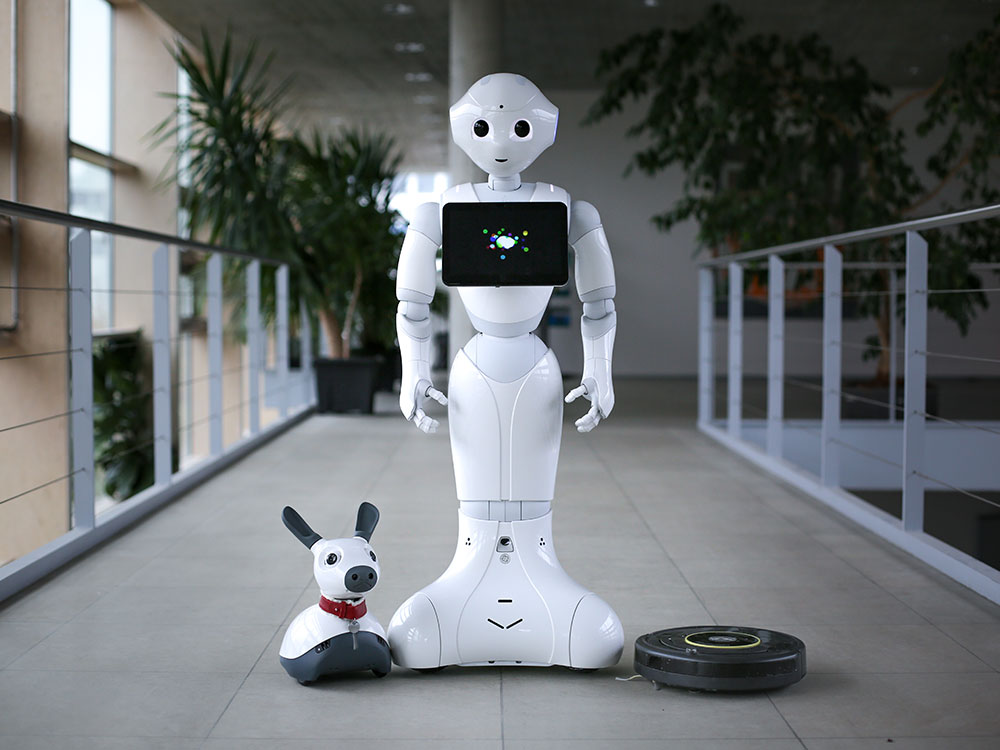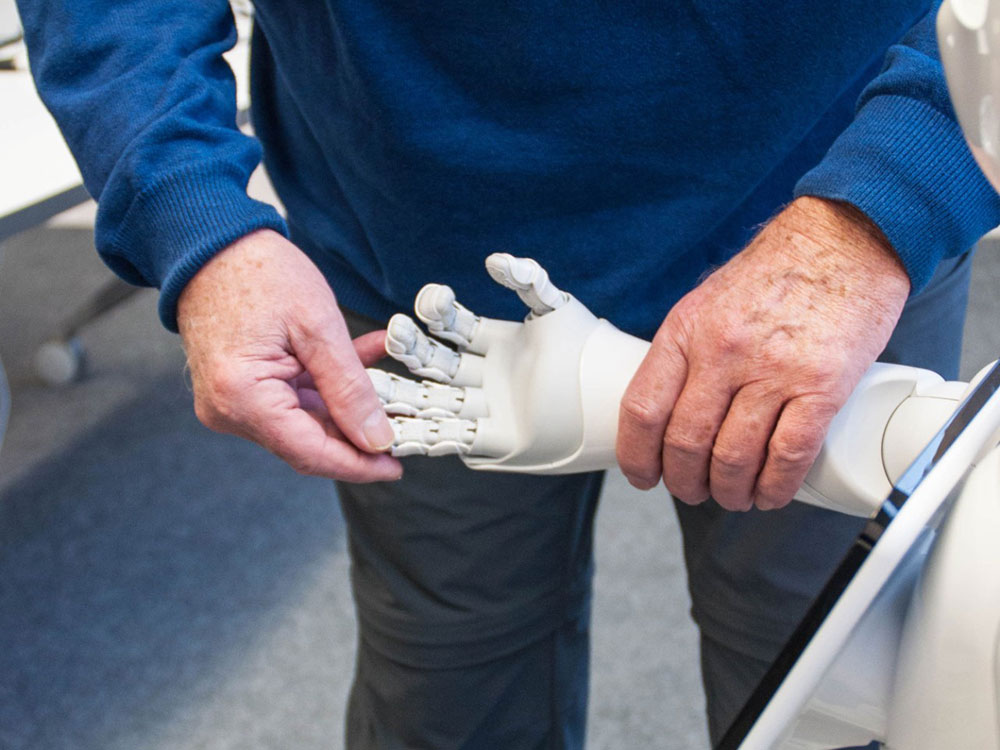
The canine robot pricks up his ears
NIKA — User-centered interaction design for context-sensitive and acceptable robots

If robots are to provide company for older people, these machines need to be understood and accepted. Fraunhofer IAO is researching how this can be done in the NIKA project, which is coordinated by the elderly care service “Wohlfahrtswerk für Baden-Württemberg.”
The challenge
For two hours, the elderly lady has been sitting impassively in an armchair in her retirement apartment. Her relatives live hundreds of kilometers away, and due to the coronavirus, there are also visiting restrictions. Who could coax her out of her apathy, motivate her to get physically and mentally active and give her a new lease of life? “As a provider of elderly care, of course the responsibility lies with our caregivers and carers first and foremost,” says Tibor Vetter from Wohlfahrtswerk für Baden-Württemberg, who described the scene above. “In light of our tight staffing situation, to relieve our employees of some of the numerous tasks they have to perform in their daily work, we see an opportunity in the future in the form of using robotics to help our residents to get active and care for them, while at the same time supporting and relieving the burden on our staff.”
Robots are already able to interact with humans in real time today thanks to AI and sensor technology. They are therefore also suitable for encouraging people to get active in the context of senior care. The only question is: what is the best way to do it? How would robots need to behave and what form would they have to take to be accepted as “partners” for elderly people? Where could they help out – in playing games, for example, or using the internet? Or could they help people to process memories from their lives by encouraging them to look at photos from the past? The general question arises as to how programmers can establish a universal “language” for machine-human interaction that is not based on words alone.
The task
To research all of this, Wohlfahrtswerk für Baden-Württemberg selected Fraunhofer IAO, the Institute of Human Factors and Technology Management IAT at the University of Stuttgart, the International Center for Ethics in the Sciences and Humanities (IZEW) at the University of Tübingen and C&S Computer und Software GmbH as its partners for the joint project “NIKA – User-centered interaction design for context-sensitive and acceptable robots.” This is because the team in Stuttgart already has a great deal of experience in designing human-machine interfaces, as well as with robotics and using AI.
“We started out with the three main types of robots that already exist: humanoid, animaloid and those that bear no similarity to living beings,” says Danial Ziegler of Fraunhofer IAO. “We wanted to find out how these three types of robots could express themselves, i.e. in order to convey particular emotions and carry out certain actions when interacting with an elderly person – and which type is best received by the elderly, and with which modes of behavior.”
The plan for the project, which is officially running until June 2021, was to test the different robots on site in interaction situations with dozens of elderly people selected by Wohlfahrtswerk from both outpatient and day care. Unfortunately, the coronavirus has thrown a spanner in the works for now for these encounters.
The solution
“Despite the pandemic, we’ve been able to conduct some tests, such as an online simulation of an interactive quiz game with our canine robot ‘MIRO’ as a gaming partner,” says Zigeler’s colleague, Kathrin Pollmann. Through this simulation, the elderly players can see and hear the robot, which speaks and acts as though it were sitting opposite them in the apartment. MIRO pricks up his ears as he waits for an answer or shakes his head to express amazement when a difficult quiz question is answered correctly. According to new research findings, there is no clear-cut ideal external form for companion robots. Instead, preferences vary from person to person, Pollmann explains. “It doesn’t necessarily have to be a humanoid robot, as many people find it rather creepy and repellent when robots resemble us too closely.”
However, an elderly person should not need to keep on learning new interaction languages for different robot types and situations. The experts at Fraunhofer IAO have therefore developed a database providing access to over 30 design modules with verbal modes of expression and physical gestures for particular interaction situations. In the future, it will be possible to use this “pattern wiki” to very efficiently and flexibly program different types of robots for care situations. The project partners hope to be able to conduct trials on site again in the first half of 2021.
It’s all about social interaction.

“At the current state of the art, robots can only be used to a limited extent in the care of elderly people who need outpatient or day care, and even then, only in select areas. For example, physical care is out of the question, as the technology is not yet sophisticated enough. Before we can consider using robots in this sensitive and very personal area here in Germany, developers need to do a great deal more work. However, what robots are most suitable for is providing older people with social stimulation. In the absence of human conversational partners, the machine takes on the role of a companion that ‘listens’ and encourages activity through its own movement. As a provider that is heavily involved in research and development in elderly care, we are interested in creating a universal, modular mode of interaction for these kinds of robots. This comprises an accepted external appearance – whether that’s humanoid, animaloid or machine-like – as well as an interaction language that elderly people understand and also enjoy using. Our joint studies with Fraunhofer IAO as part of the NIKA project have already led to a deeper understanding of older people’s needs in this area. The database developed by Fraunhofer IAO with modules for easily programming care robots for over 30 social contexts, which were identified in advance, could make human-machine interaction significantly easier in the future.”

